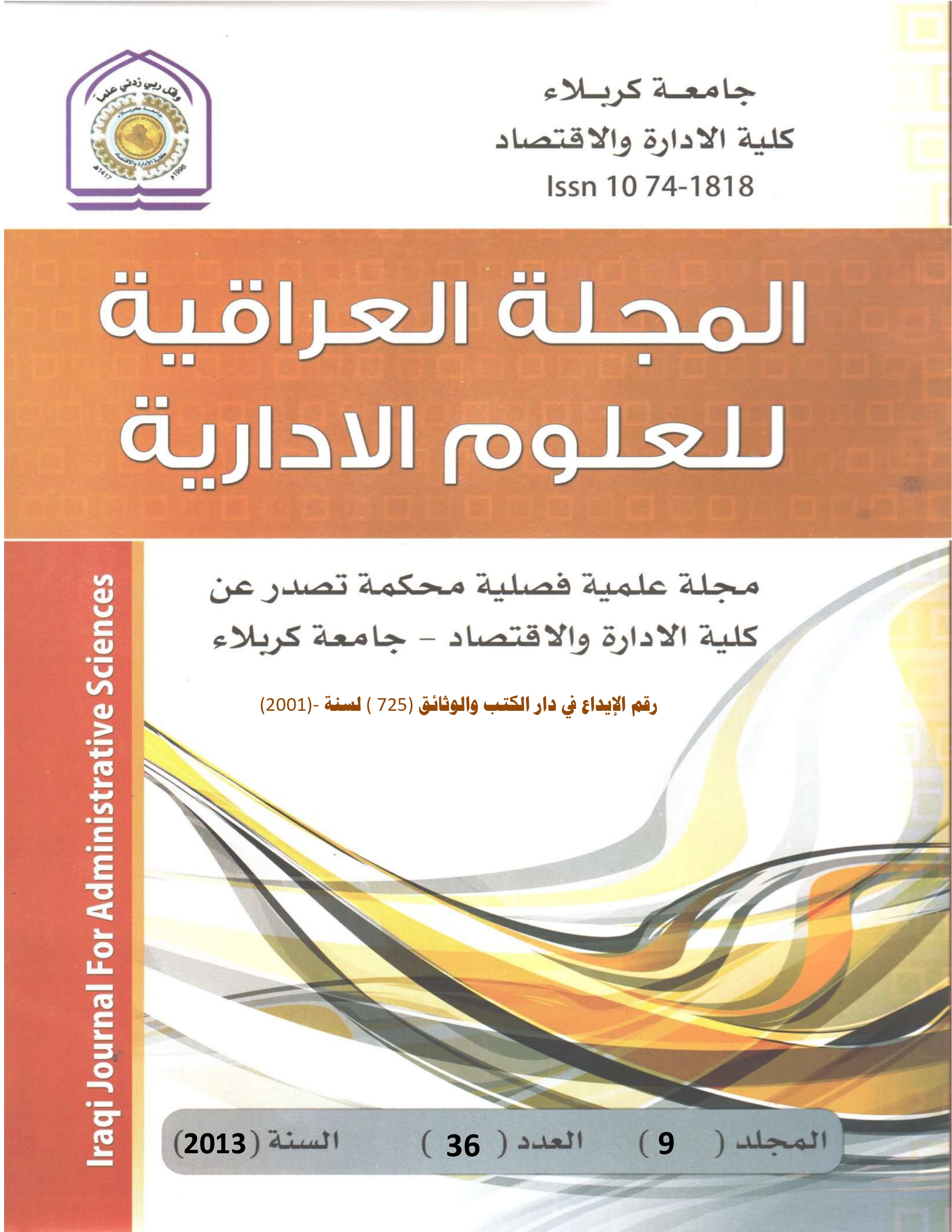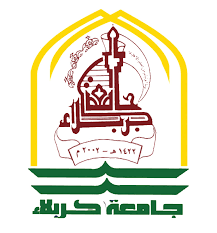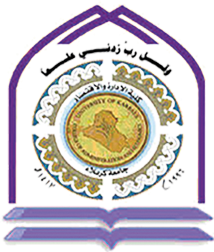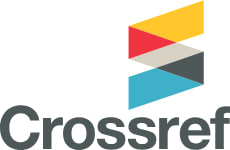Administrative empowerment and its impact on enhancing the performance and creativity of employees - a field study in the General Company for Iraqi Ports
Keywords:
Administrative empowerment,, employee performance and creativityAbstract
This research aims to demonstrate the impact of Managerial Empowerment
in enhancing of the Employees Performance and Innovation in General
Company of Iraqi Ports in Basra, which the researcher hypothesized that, and
she adopted theoretically on the sources of Arabic and foreign in the literature of
modern management, and practical on the style of descriptive statistics through
a form questionnaire. The research concluded the importance of Managerial
Empowerment in the work of the company by raisingthe performance level of
employees and their sense of job satisfaction and loyalty and their affiliation to
the company as well as readiness to provide innovative approaches to work.The
most important recommended by the study is to increase the focus on the
applications’ of concept managerial empowerment in high level as one of the
modern management techniques, which improves the performance of the
organization in light of changing circumstances in the Iraqi environment.
References
(20) Anonsymous, (1995). using performance management, Association –
management , v47 ,n5,may .
(21) Benjamin,s&perland ,(1995). How developmental supervision and
performance management improve effecttiveness , Heath care supervisor , v 14
n2 , dec,pp 19-28.
(22) Besterfield, D. H., Besterfield-Michna, C., Besterfield, G. H. and Besterfield,
S. M. (2005). Total Quality Management, 6th ed., Person Education, Ltd.:
Singapore.
(23) Browin D.M.&Laverich,S.(1994), Measuring Corporate Performance, Long
Range planning ,Vol.27,No.4.
(24) Brown, D. R. and Harvery, D (2006). An External Approach to
Organizational development, New Jersey: Prentice Hall.
(25) Collins, David,(1995) Wither Democracy, Lost Debates in Management,
Empowerment in Organization,Vol.4,No.1.
(26) Conger, J. A. and Kanungo, R. N. (1988). The Empowerment Process:
Integrating Theory and Practice. Academy of of Management Review, Vol.19,
No.3, pp.471-482.
(27) Cook, C.W and Hunsaker, P.L. (2001). Management and Organizational
behavior, New york: McgrowHill.
(28) Daft R., (2001).Organizational Theory and Design, 7th ed., (Ohaio, South
Western College Publishing.
(29) Ettorre , Barbara. (1997). The Empowerment Gap Hype Vs Reality, Br
Focus, 26.
(30) Gandz, J. (1990). The employee empowerment era. Business Quarterly,
Vol.55, no.2, pp.70-74.
(31) Govindarajan,M&&Natarajan,S, (2007),”Principles of Management”,
Prentice-Hall of India private limited New Delhi, India.
(32) Habibsahhaf, (2003). dictionary of human resources management, library
du Liban publishers, Beirut.
(33) Leon C Megginson et al, ,(1986). Management: concepts and applications,
second édition; Harper a Row Publisher, N. Y.
(34) Little, J. and Ferries, S. (2002). Self Funding Improvement Teams.
Industrial Management, 44(6).
(35) Martin, J. (1992). Cultures in Organization: Three perspective. New York:
Oxford university press.
(36) Pfeffer، J (1994). Competitive Advantage through People, Harvard Business
School Press: Boston، Massachusetts.
(37) Potterfield, Thomas A. (1999). The Business of Employee Empowerment,
Westport, Cn: Quorum Books. (38) Randolph, W. A (2000), Re-thinking Empowerment: Why is it Hard to
Achieve?, 29 (2), 94-108
(39)Riggs, Joy. (1995). Empowering Workers by Setting Goals, Nations Business.
(40) Robbins, Stephen P. (1993). Organizational Behavior: Concepts
Controversies and Applications, 6th Edition, Printice-Hall Inc, Englewood,
Cliffs, N.J.
(41) Schroeder ,P. (2002) Casrstudy of an Administrative Services Department :
The Efect of Learning Organization Theory as an Intervention strategy
in The Transformation of organizational Culture, Pepper Dine University , Edd ,
v63-08A of Dissertation Abstracts International.
(42) Shackleton, V. (1995). Business Leadership. London: Rout ledge.
(43)Thomas, K. W. and Velthhouse, B.A. (1990). “ Cognitive elements of
empowerment: an ‘interpretive’ model of intrinsic task motivation”, Academy
of Management Review, Vol.15, No.4, pp.666-681.
(44)Wiig; K. (2003), "Knowledge Management Foundations: Thinking",
Arlington: Schema Press.
(45) Y. Chuang, R. Church, and J. Zikic,( 2004). “Organizational Culture,
Group Diversity and Intra-group Conflict”, Team Performance Management,
Vol. 10, No. 1/2, pp. 26-34.
(46) Zemeke, R. and Schaaf, D (1989), The Service Edge: 101 Companies That
Profit from Customer Care (New York: New American Library.
Downloads
Published
How to Cite
Issue
Section
License
Copyright (c) 2013 Economics and Administration College - Karbala University

This work is licensed under a Creative Commons Attribution-NonCommercial-NoDerivatives 4.0 International License.
Authors retain the copyright of their papers without restrictions.










